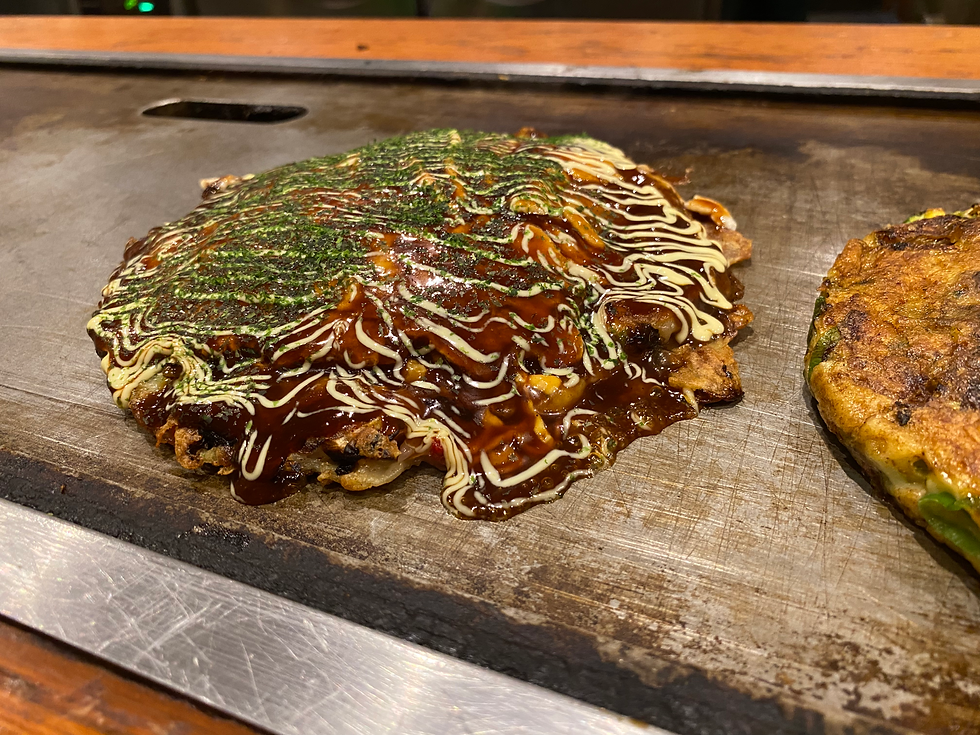Authentic Traditional Soba and Tempura
- Tommy Lam
- Jun 4, 2022
- 3 min read
Updated: Jun 9, 2022
Today's restaurant is this soba shop. Hidden away in a suburban neighborhood amongst a ton of residential homes, Soba Dokoro Tsubakino (そば処椿野) is a shop that specializes on soba and udon. Unlike a couple of soba places near KEK, this one doesn't appear to be a large chain restaurant and is actually open for dinner.

The ambience in the restaurant is also quite cute with the plethora of ceramics available for sale, little Totoro like cats dolls, and birds statues. Very fitting considering the outside.
The main standard soba this establishment sells is 20:80 soba (二八そば or ni-hachi soba), which describes the ratio of wheat:buckweheat flour used to make the noodles. Some supermarket dried soba might be as low as 40% buckwheat flour since buckwheat can be hard to work with so the standard 20:80 ratio is very good to see.

However, what's depicted below is not ni-hachi soba but 100% buckwheat soba (十割そば or juwari soba). In comparison to ni-hachi soba, juwari soba is much harder to work with due to the coarseness of buckwheat but yields a more elastic, chewy texture and a nuttier flavor. At this establishment, I felt that this is probably the best texture I've had of soba but the aroma and taste was a bit lacking. Even with just using a bit of tsuru by itself (without horseradish or onions), it was hard to appreciate the typical soba aroma since it lingered more towards the back of my palette. However, it was still enjoyable and would recommend it.

Additionally, I got the vegetable tempura (野菜天ぷら). I was a little shocked that rather than the typical tempura sauce (天つゆ), it was served with a matcha salt! From my experience, the only time salt is served as the main seasoning is when the quality of the ingredients are higher and/or the chef is confident in their technique. Thankfully, that's what I got today. I started with the asparagus first since it was the easiest to pick up but also had the smallest accessible surface area for dipping in the salt, thereby warming up my palette. The next bite was I believe the heart of a banana flowers, which has a taste similar to a mild artichoke heart. This was a bit of a surprise since banana flowers are used in Vietnam quite a bit so it was a bit nostalgic. Next was the zucchini and the kabocha, which had great dunkability to where I could really appreciate how much salt stuck onto the batter, to the point where the matcha had enough room to breath and compliment the taste of the batter and starchy vegetables. Second to last was the eggplant. The taste of the eggplant was quite pronounced and the texture was just soft enough where it's easy to eat but was able to maintain its shape. Additionally, I was a bit surprised that the eggplant wasn't too oily since eggplant can be quite the sponge so kudos to the chef!

Finally, hidden behind the zucchini and banana flower is the bunashimeji mushroom. It was so meaty and the mushroom flavor was intense but the matcha salt enhanced the nice inherent earthiness. I'm really glad I saved it for my last bite.
From the quality of the noodles to the expertise shown in the vegetable tempura, I think this is at least an 8.5/10. The technical skill required for these two dishes are quite high so even though the soba didn't have the aroma I was hoping for, there was more than enough for me to really enjoy the meal. Next time, I think I'm going to get the 会いもり(aimori?)そば with the juwari and the black grind juwari combination (and maybe a tenpura don...). After that, the goma-tare soba is probably next... and some duck....





Comments